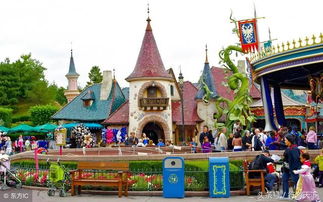Introduction to European Dance
European dance is a rich tapestry woven with diverse cultural threads, reflecting the continent's history, traditions, and artistic expressions. From the lively folk dances of rural villages to the refined elegance of ballroom dancing, Europe boasts a wide array of dance forms that have captivated audiences for centuries. Let's embark on a journey through the vibrant world of European dance, exploring its origins, characteristics, and cultural significance.

Historical Overview
Dance has been an integral part of European culture since ancient times, with evidence of ritualistic dances dating back to prehistoric civilizations. As European societies evolved, so too did their dance traditions, influenced by various factors such as religion, social customs, and artistic movements.
Folk Dance
One of the most enduring aspects of European dance is its folk traditions. Each region boasts its own unique repertoire of folk dances, characterized by lively rhythms, colorful costumes, and community participation. From the exuberant polkas of Eastern Europe to the graceful waltzes of Austria, folk dance serves as a celebration of cultural identity and heritage.
Classical Ballet
Europe is also home to classical ballet, a sophisticated art form that originated in the Italian Renaissance courts and flourished in the royal courts of France and Russia. Characterized by its precision, grace, and storytelling, classical ballet has become synonymous with elegance and refinement. Iconic works such as "Swan Lake" and "The Nutcracker" continue to enchant audiences around the world.
Ballroom Dancing
Ballroom dancing emerged in the salons and grand ballrooms of European aristocracy, providing an opportunity for social interaction and display of elegance. From the passionate tango of Argentina to the graceful Viennese waltz, ballroom dance embodies the spirit of romance and sophistication.
Contemporary Dance
In addition to its rich heritage, Europe is at the forefront of contemporary dance, embracing innovation and experimentation. Contemporary dance encompasses a wide range of styles, from avantgarde choreography to street dance influenced by urban culture. European dance companies and choreographers continually push boundaries and challenge conventions, contributing to the evolution of the art form.
Cultural Significance
European dance serves as a reflection of the continent's cultural diversity and dynamism. It provides a platform for expression, storytelling, and social interaction, fostering connections among people from different backgrounds. Whether performed on grand stages or in intimate settings, dance transcends language barriers and unites individuals through the universal language of movement.
Conclusion
In conclusion, European dance is a testament to the continent's rich cultural heritage and artistic innovation. From the spirited folk dances rooted in tradition to the graceful movements of classical ballet and the dynamic energy of contemporary dance, Europe offers a captivating tapestry of dance forms that continue to inspire and enchant audiences worldwide. Through dance, Europe celebrates its past, embraces its present, and shapes its future.
Bibliography
Anderson, Jack. "The Nutcracker Ballet A Magical Journey." Dance Heritage Coalition, 2017.
Au, Susan. "Ballet and Modern Dance." Thames & Hudson, 2012.
Cohen, Selma Jeanne. "International Encyclopedia of Dance." Oxford University Press, 1998.
Feliksdal, B. Modern European Dance: The Contributions of Germanspeaking Émigrés to American Dance, Berlin 2009.
Manning, Susan. "Ecstasy and the Demon: Feminism and Nationalism in the Dances of Mary Wigman." University of California Press, 1993.











